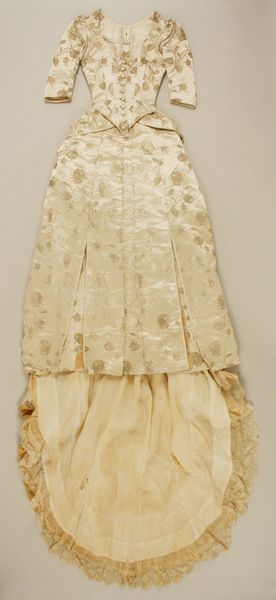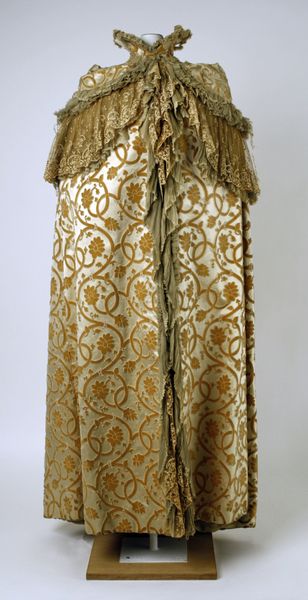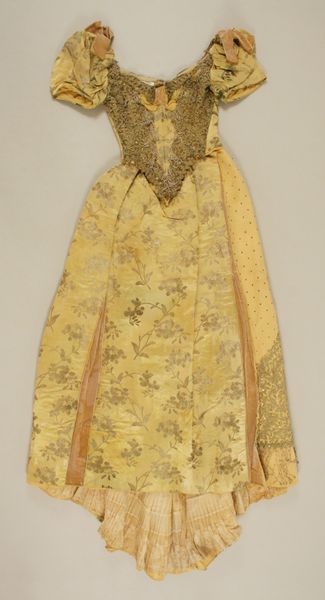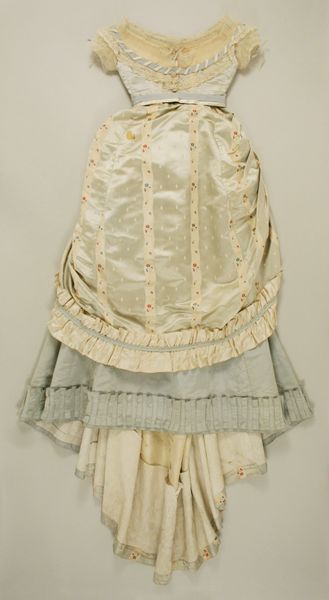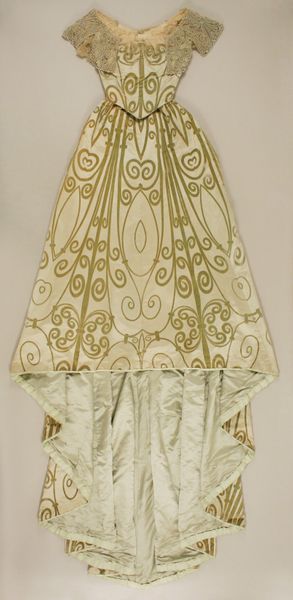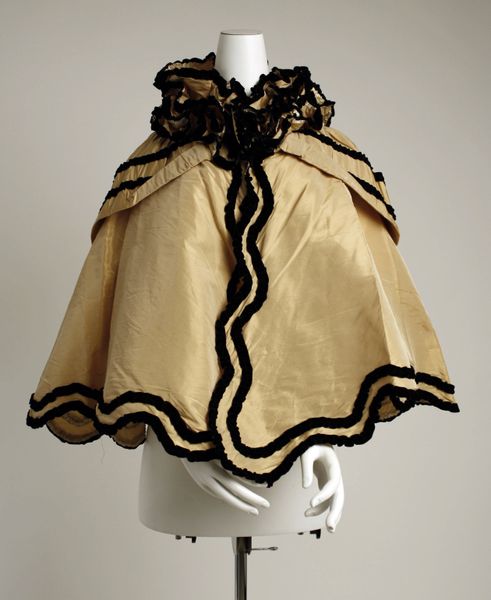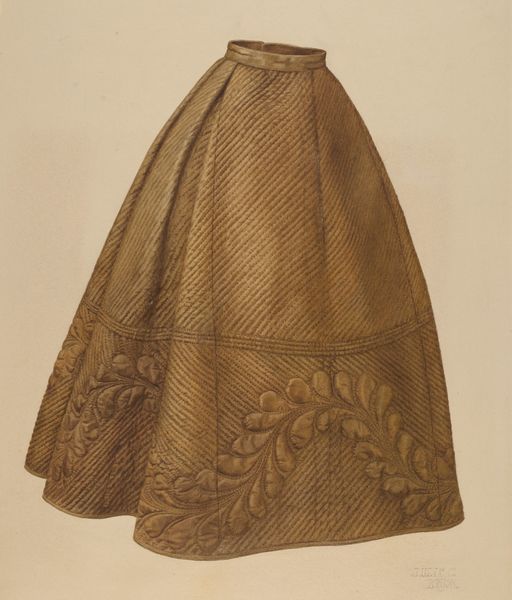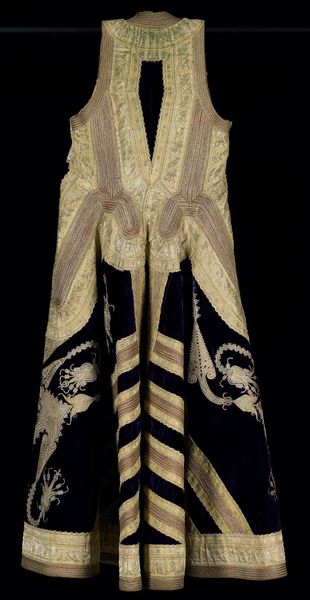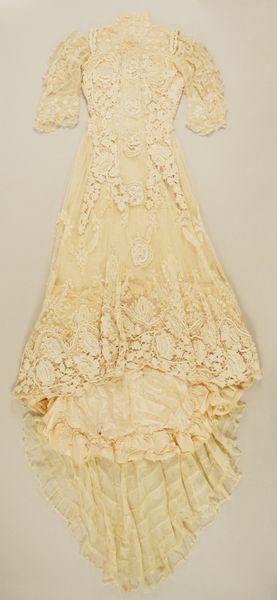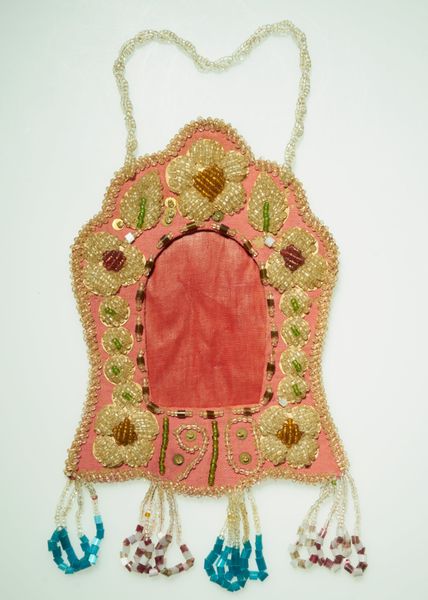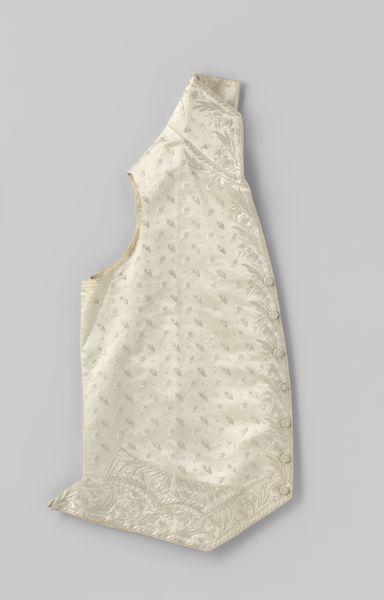
Copyright: Public Domain
Editor: Here we have "Ball Gown" made sometime between 1891 and 1893, an example of mixed media, including textile and embroidery, by Emile Pingat. I must say, it evokes the elegance and opulence of a bygone era. What’s your take on this piece, particularly with the distinctive use of yellow ribbon? Curator: It whispers stories, doesn't it? I'm drawn to the idea that garments like these were statements, dreams woven into fabric. Pingat captures a certain fleeting moment – an idealized vision of femininity. The yellow ribbon might seem playful at first, but I see it as deliberate sunshine, an intentional burst of optimism against the more subtle tones of the lace. Do you see a sort of visual tension in that? Editor: Definitely. The ribbons command attention, almost like a spotlight. It's hard to ignore their cheerful contrast. Did the bright yellow symbolize anything specific during that period, or do you think it was purely an aesthetic choice? Curator: I suspect it's both. Color symbolism is rarely straightforward, but yellow could represent joy, wealth, even intellect. It could also just be a fashion statement! Though thinking of the process, hand-embroidered touches add such intimacy to the design, don't they? It makes you think about the artisans behind it all. Editor: It does. I imagine a team of skilled craftspeople meticulously working on the details. Seeing it this way really transforms the garment into a testament of craftsmanship. It feels more intimate and personal. Thanks for your insight! Curator: And thank you for seeing the magic in the details with me. Isn't it lovely to imagine it once swirling around a ballroom? It’s the echo of a feeling.
Comments
No comments
Be the first to comment and join the conversation on the ultimate creative platform.
